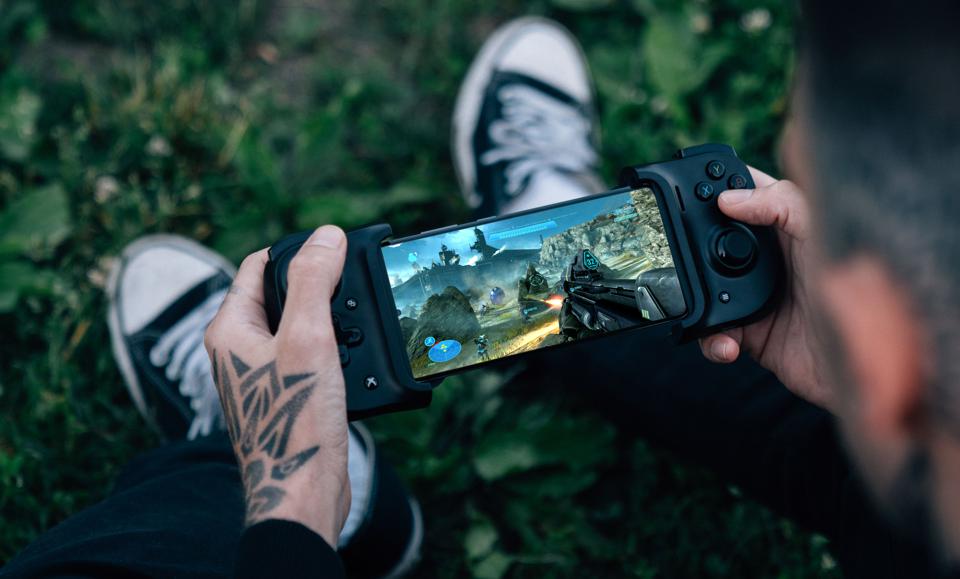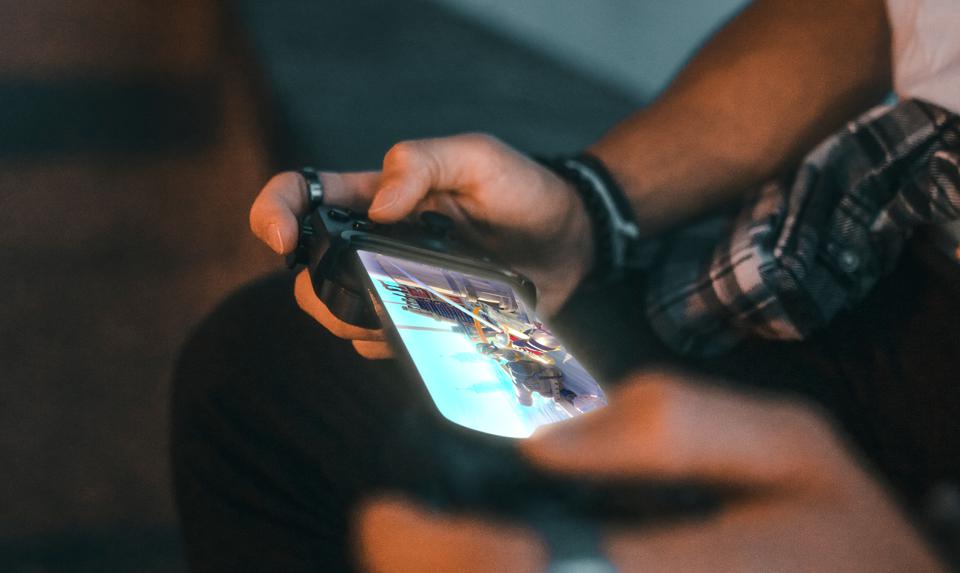Samsung’s Note20 Ultra And Microsoft’s xCloud Are Ushering In A Whole New Era Of Mobile Gaming
- The Tech Platform

- Oct 1, 2020
- 5 min read
I think we can all remember a time, not all that long ago, when mobile games were nothing more than silly little diversions. Time wasters, mostly. Popular downloads like Flappy Bird, Cut the Rope and Angry Birds were admittedly fun—though ultimately shallow—experiences designed to be digested in small, bite-sized chunks.
Well, as simple and arguably charming as those initial forays into mobile gaming were, they’re a far cry from where the industry currently resides. And boy, have we come a long way.
Earlier this summer, AR sensation Pokemon Go surpassed $3.6 billion in lifetime revenue, while battle royale pioneer PUBG Mobile has pulled in over $3 billion since its launch back in 2018. Just as impressive, the mobile edition of Fortnite blew past $1 billion in earnings in only two years.
It’s the massive popularity of console-style mobile titles, like the aforementioned third-person shooters, that give us a sense of where phone and tablet gaming is headed. Even though Candy Crush is still crushing it when it comes to cash, it seems both player taste and game options are seriously diversifying.
Rapidly improving mobile tech is increasingly showing up to facilitate.
Point being: Mobile gaming is big, getting bigger by the day, and the line between consoles, smartphones, tablets and PCs is becoming more blurry all the time. Now that game streaming is becoming progressively mainstream, with emerging remote services like Stadia and Amazon’s recently-announced Luna, it’s easier than ever to play quality (often AAA) titles on Android devices, software traditionally accessible only via specific boxed hardware.
Case in point: This week I’ve been testing out Microsoft’s xCloud on Samsung’s relatively new Note20 Ultra. Between the massive 6.9 inch pixel-dense AMOLED display and Dolby Atmos support, this is arguably the best phone I’ve ever gamed on. Still, you don’t specifically need the Note20 to stream games over xCloud, of course, but as we’ll get to in a minute, there’s honestly no better way to experience xCloud at the moment.
What you will need, however, is an Android device (phone or tablet) equipped with Android software 6.0 or greater, at least Bluetooth 4.0 for wireless controller connectivity, the Xbox Game Pass app, an Xbox Game Pass Ultimate subscription, and a fast internet connection. Still no iOS compatibility, sadly, though it’s rumored to be on the way.
The Kishi, coupled with a Note20 Ultra, is the best way to play xCloud.
5Ghz Wi-Fi is recommended, especially if you’re playing at home with a capable router, though if you have the Note20 Ultra or something similar that sports 5G data, then you’re set no matter where you decide to game. Going over your data limit is another issue entirely, but we’ll discuss that.
Like I mentioned, you can connect an Xbox One wireless controller to your device, which will probably be most people’s go-to setup, but that isn’t exactly tidy or compact. For that reason, I’ve been xCloud gaming with Razer’s Kishi, a genius clip-on contraption that plugs directly into the Note20 Ultra and mimics the layout of an Xbox gamepad. It spreads out to sit on either side of your phone so the thumb-sticks frame the screen.
It’s like attaching Switch Joy-Cons, except they’re larger, way more comfortable and go a long way in recreating the console experience on a phone. Honestly, for me, controls have been half the battle when it comes to mobile games. Touch controls are adequate for rudimentary stuff like puzzle games, but if I’m trying to tackle an FPS with a screen overlay, I have little patience. The Kishi eliminates this struggle, which is good, because we’re dealing with real meat-and-potatoes titles on Xbox Game Pass.
Launching a game on xCloud is stupidly simple. As this is streaming technology, there’s no hefty download to wait for. Once you’re all logged in to the app, you just select a game, press ‘play’, and wait a few seconds as a green rocket animation runs. Then the game starts. After that, it’s basically like playing on your local Xbox. Practically magic. No real stuttering to speak of, except for the extremely rare (and always passing) connection hiccup.
Now, when it comes to game streaming, latency is a huge deal, and for many people, it’s how these services will live or die. Since games are coming in over the network, there’s all kinds of opportunities for things to get choppy or laggy. But as far as control latency goes, xCloud is really impressive, and for reference moving forward, I’m on a 100 Mbps down/5 Mbps up home internet connection.
That said, a slim modicum of lag is definitely present, but for me, that changed depending on my input method. I noticed it most when using a standard Xbox wireless controller. During this scenario, it was noticeable but manageable. Not Chu Chu Rocket 56K Dreamcast levels of delay, but observable, nonetheless.
Plugging the Note20 Ultra physically into the Razer Kishi lessened lag considerably, probably because it eliminated the extra Bluetooth hoop for button press data to jump through. In that sense, I’d highly recommend a physical connection to the phone, if at all possible.
5G game streaming is now a reality.
Image quality is an entirely different beast. From everything I’ve heard and read so far, it seems Microsoft is capping xCloud streaming resolution at 720p, and while it’s definitely apparent, the lower resolution (by console and PC standards) still manages to look great on the Note20 Ultra’s 496 ppi screen. Nowhere near approaching the 4K sharpness that I crave—and possibly not desirable on a bigger tablet screen—but more than acceptable, especially since input lag is minimal over a physical connection.
I’m sure Microsoft has 4K streaming in the works, especially to compete with what Stadia is already offering. But for now, I’ll take what I can get, and what I can get is pretty damn good.
As far as mobile data streaming goes, I did test xCloud out over 4G/LTE and it worked surprisingly well. In fact, latency and image quality remained largely comparable to streaming over 5GHz Wi-Fi, and I only dropped connection once during my demoing.
Unfortunately, my carrier hasn’t yet rolled out 5G mobile data in my area, so I was unable to test xCloud with the Note20 Ultra’s blisteringly fast out-and-about upgrade. I’d imagine that if xCloud works this well over 4G, 5G likely provides a more than adequate streaming experience.
That leaves only the issue of data caps to address, and as of right now, I think that’s the biggest hurdle for game streaming to overcome. I’ve read that xCloud uses around 2-3 GB of data per hour, and while that’s nowhere near Stadia’s purported 15-20GB per hour at the highest resolution settings, that can quickly add up, most notably on a constricted mobile data plan.
If you have unlimited data, either at home or on the go, then you have little to worry about here. But if you’re always working toward a monthly 1TB cable internet data cap (like me), or an even more paltry 4 or 6GB phone/tablet max, then regular xCloud use could put a detrimental dent in your daily usage.
That aside, the Note20 Ultra, xCloud and Kishi have turned what I once considered an interesting tech novelty into something that I plan on integrating into my weekly gaming rotation. It’s truthfully that good, and has opened up new avenues of enjoying Game Pass titles, whenever and wherever. I’ve yet to try out Stadia or Luna, but for the time being, Microsoft is delivering with tons of stream-ready content, a catalog that’s steadily growing.
Yes, the flagship Samsung behemoth’s wild $1300 price tag is undeniably prohibitive, but at the moment, the unmatched display quality, coupled with Xbox’s huge/accessible game library and unbeatable streaming ease, are making it very difficult to play on just about anything else.
Source: Paper.li










Comments